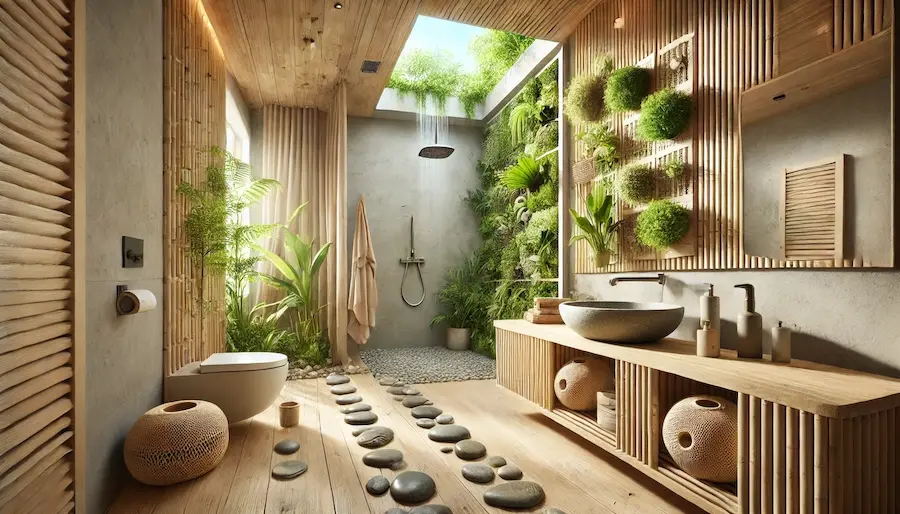Designing an eco-friendly bathroom involves making choices that reduce environmental impact while maintaining functionality and style.
Key Features of an Eco-Friendly Bathroom
- Water Conservation: Installing low-flow toilets, showerheads, and faucets can significantly reduce water usage without compromising performance.
- Sustainable Materials: Utilizing materials like bamboo, recycled glass, or reclaimed wood for vanities, flooring, and accessories minimizes environmental impact.
- Energy Efficiency: Incorporating energy-efficient lighting, such as LED fixtures, and considering energy-efficient water heaters can lower energy consumption.
- Eco-Friendly Fixtures: Choosing fixtures made from sustainable materials and designed for efficiency contributes to an environmentally friendly bathroom.
- Proper Ventilation: Ensuring adequate ventilation improves air quality and reduces moisture, preventing mold growth and maintaining a healthy environment.
Considerations When Designing an Eco-Friendly Bathroom
- Durability: Select high-quality materials and fixtures that are built to last, reducing the need for frequent replacements and minimizing waste.
- Non-Toxic Finishes: Opt for paints, sealants, and adhesives with low or no volatile organic compounds (VOCs) to improve indoor air quality.
- Natural Lighting: Maximize the use of natural light to reduce reliance on artificial lighting, enhancing energy efficiency.
- Waste Reduction: Implement recycling bins and choose products with minimal packaging to reduce bathroom waste.
Conclusion
Creating an eco-friendly bathroom is a responsible and rewarding choice that contributes to environmental sustainability. By focusing on water and energy efficiency, using sustainable materials, and ensuring proper ventilation, you can design a bathroom that is both eco-conscious and aesthetically pleasing.
